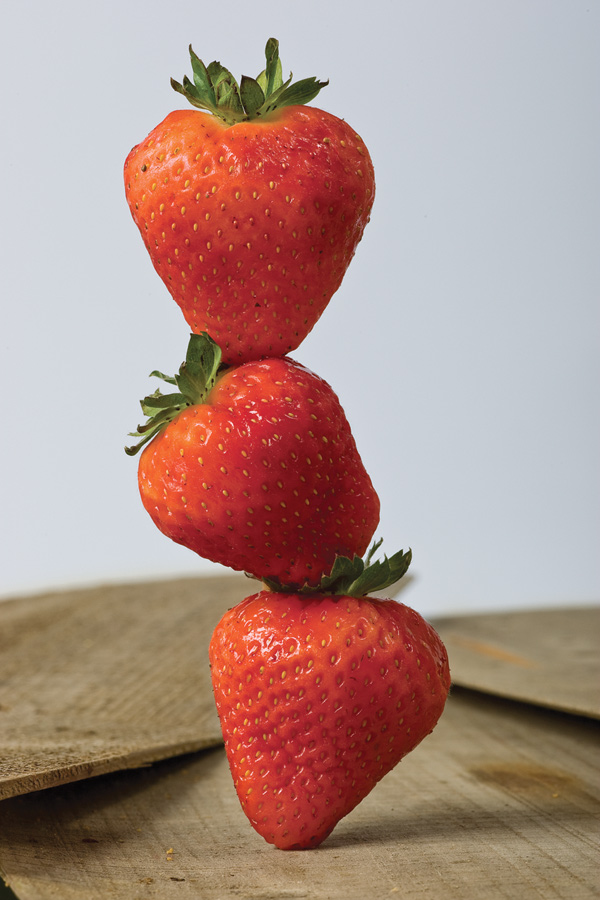Full sun, low moisture lead to best yields Sweet summer STRAWBERRIES

By Linda C. Dolak
OSU Ext. master gardener volunteer
Strawberries planted in the home garden will produce fruits very quickly, and need a small amount of space. One plant can yield as much as one quart of fruit. The amount of fruit produced usually declines during the second and third years, so planting a new crop after the original plants have produced fruits for three or four years is necessary.
The most successful strawberry plants need full sun throughout the day. Shady areas tend to promote more vegetation grown and fewer berries. There also is a higher risk of disease when there is less than three-fourths of the day with sun.
Strawberries will grow in a wide range of soil types as long as there is enough drainage, aeration and moisture. However, the best soils are loam or sandy loam soils with organic matter added. Soil that is poorly drained and wet usually produces plants with retarded growth and more disease problems. Strawberries are not necessarily sensitive to soil acidity or alkalinity, but do best with a pH range between 5.8 and 6.5.
Though there are many varieties of strawberries, it is best to use one known to grow in our region. Purchase plants from an established nursery, and select healthy, virus-free plants. Strawberries are self-fruitful (they don’t require cross-pollination) and will produce good crops if only one variety is planted. However, the fruiting season can be extended if you plant varieties that ripen at different times.
Work the intended area well to prepare the bed before your plants are set. If there is sod or weeds growing where you want to establish the bed, the area should be worked the year before so that all perennial weeds, grass, and soil insects are removed.
After you prepare the intended area, organic matter in the form of manure or a green manure can be added by plowing or tilling the soil in the fall or winter before setting the plants. If you have not had your soil tested, a general fertilizer such as 10-20-10 or 12-24-12 can be applied and should be mixed into soil at a depth of 4 to 6 inches before planting.
Do not allow plants to dry out during planting. Place plants in a container with enough water to keep the roots wet. Plant so the crowns (where the leaves arise) are even with ground level. Spread the roots out slightly and pack the soil tightly enough so a quick pull of a leaf will not uproot the plant. About 1 inch of water per week should be applied if the soil is dry and it has not rained recently. The plants are sensitive to excessive moisture, so raised beds or ridges for planting will allow for good drainage. For weed control, we recommend mechanical cultivation and/or mulching between rows.
Put 12-24 inches between plants, and 4 feet between rows. Runner plants will form from the mother plants and take root. In the fall, plants build up food reserves and form fruit buds for the next year’s crop.
During winter, protect plants with mulch or straw that is weed-seed-free at a depth of 2 to 3 inches over the plants, usually between Nov. 15 and 30. Pull the mulch off in early spring and leave between rows. Frost protection could make the difference between a good crop and a bad crop.
Early spring is the best time to plant strawberries if the soil is not too wet. For details on planting and more, go to: http://go.osu.edu/strawberry.
 43
43

